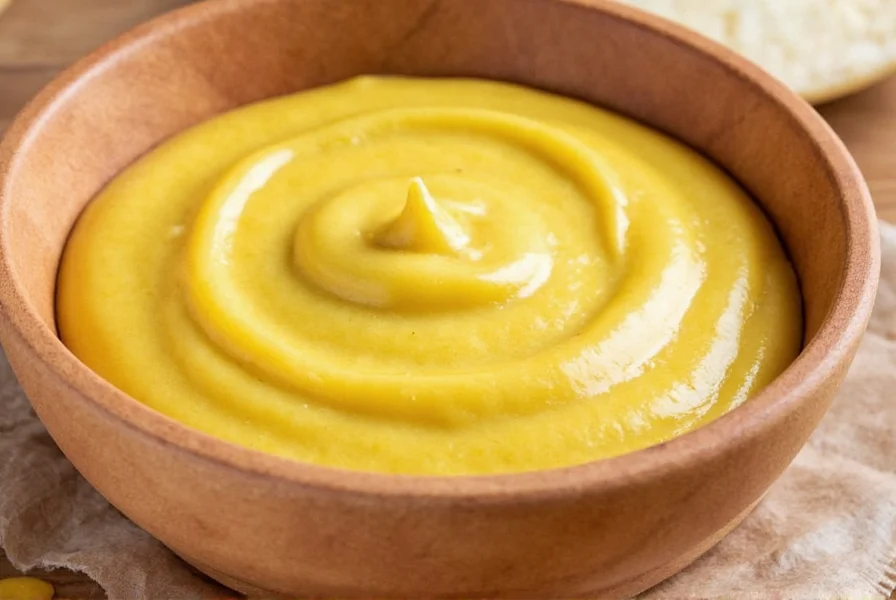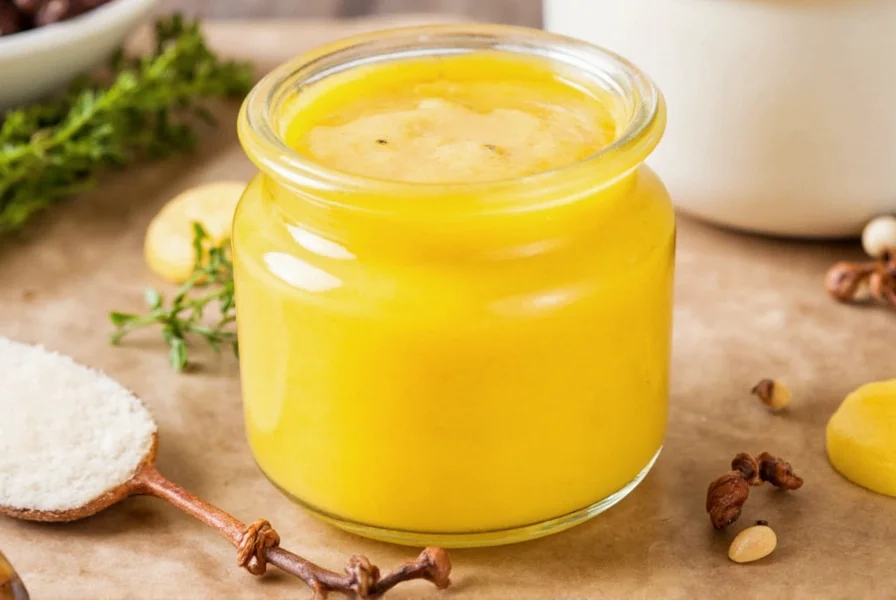When examining mustard nutrition facts, this versatile condiment stands out as one of the healthiest flavor enhancers available. A standard 1-tablespoon serving of yellow mustard contains approximately 5 calories, 0g fat, 0g protein, and less than 1g of carbohydrates. Dijon mustard averages 10-15 calories per tablespoon with similar macronutrient profiles. Unlike many condiments, mustard delivers flavor without significant caloric impact, making it an excellent choice for those monitoring their dietary intake.
The nutritional composition varies slightly between mustard types. Traditional yellow mustard gets its vibrant color from turmeric and contains vinegar, water, and mustard seeds. Dijon mustard, originating from France, uses verjuice (unripe grape juice) instead of vinegar, resulting in a more complex flavor profile and marginally higher nutrient content. Whole grain mustard preserves visible mustard seeds, offering slightly more fiber and phytonutrients.
| Mustard Type | Calories (per tbsp) | Carbohydrates (g) | Protein (g) | h>Fat (g)Key Nutrients | |
|---|---|---|---|---|---|
| Yellow Mustard | 5 | 0.5 | 0.2 | 0 | Turmeric (curcumin), selenium |
| Dijon Mustard | 12 | 0.8 | 0.4 | 0 | Vitamin C, calcium, magnesium |
| Whole Grain Mustard | 15 | 1.0 | 0.5 | 0.1 | Fiber, glucosinolates, omega-3s |
| Honey Mustard | 50 | 12 | 0.1 | 0 | Added sugars, minimal nutrients |
One of the most significant aspects of mustard seed nutrition is its rich content of glucosinolates—sulfur-containing compounds also found in cruciferous vegetables. When mustard seeds are crushed and mixed with liquid, the enzyme myrosinase converts glucosinolates into isothiocyanates, particularly allyl isothiocyanate, which gives mustard its characteristic pungency and offers potential anti-inflammatory and antioxidant benefits.
Research published in the Journal of Agricultural and Food Chemistry indicates that mustard seeds contain significant amounts of selenium, a mineral essential for thyroid function and antioxidant defense systems. Just one tablespoon provides approximately 2% of the daily recommended intake. Mustard also contains small amounts of magnesium, calcium, and B vitamins, though these are not substantial enough to consider it a primary source.
When comparing mustard vs ketchup nutrition, the differences are substantial. While a tablespoon of ketchup contains about 15 calories and 4 grams of sugar, mustard typically has minimal to no sugar and significantly fewer calories. This makes mustard a superior choice for those managing blood sugar levels or pursuing weight management goals. Unlike many commercial condiments, traditional mustard formulations avoid added sugars, though honey mustard varieties represent an exception to this rule.

The health benefits of mustard extend beyond its low-calorie profile. Studies suggest that compounds in mustard seeds may help regulate blood sugar levels by improving insulin sensitivity. A 2020 review in Nutrients highlighted that allyl isothiocyanate may support metabolic health through multiple pathways. Additionally, the turmeric commonly added to yellow mustard provides curcumin, which has well-documented anti-inflammatory properties.
For those concerned about is mustard good for weight loss, the evidence is favorable. With minimal calories and no significant fat content, mustard serves as an excellent flavor enhancer without compromising dietary goals. Its pungency may also help reduce overall food intake by increasing satiety signals. Unlike high-fat condiments like mayonnaise (which contains about 90 calories per tablespoon), mustard adds flavor without substantial caloric cost.
When considering mustard nutrition facts for specific dietary needs, it's generally suitable for most eating patterns. Mustard is naturally gluten-free, vegan, and keto-friendly in standard preparations. However, those with thyroid concerns should note that excessive consumption of raw cruciferous vegetables (and by extension, large amounts of mustard) might interfere with iodine absorption due to goitrogenic compounds. This is typically only a concern with extremely high consumption levels.

Integrating mustard into your diet offers versatility beyond sandwiches. Use Dijon mustard as a base for salad dressings, incorporate whole grain mustard into marinades for proteins, or add yellow mustard to vegetable roasting pans for enhanced flavor without added calories. For those exploring homemade mustard nutrition benefits, creating your own allows control over ingredients, avoiding preservatives and excess sodium found in some commercial varieties.
When evaluating commercial products, check labels for unnecessary additives. The cleanest mustard options contain only mustard seeds, vinegar, water, salt, and spices. Some brands add sugar or honey, which increases carbohydrate content significantly. For those monitoring sodium intake, look for low-sodium varieties, as standard mustard contains about 50-120mg of sodium per serving.
How many calories are in a tablespoon of mustard?
A standard tablespoon of yellow mustard contains approximately 5 calories, while Dijon and whole grain varieties typically range from 10-15 calories per tablespoon. Honey mustard is significantly higher at about 50 calories per tablespoon due to added sugars.
Does mustard have any significant vitamins or minerals?
Mustard contains small amounts of selenium (about 2% of daily value per tablespoon), magnesium, and calcium. The turmeric in yellow mustard provides curcumin, while mustard seeds contain glucosinolates that convert to beneficial isothiocyanates when prepared.
Is mustard suitable for a keto diet?
Yes, traditional mustard varieties (yellow, Dijon, whole grain) are keto-friendly with less than 1g of carbohydrates per tablespoon. However, honey mustard and other sweetened varieties contain significantly more carbohydrates and should be avoided on strict keto diets.
Can mustard help with inflammation?
Yes, mustard contains compounds like allyl isothiocyanate and curcumin (in yellow mustard) that have demonstrated anti-inflammatory properties in research studies. These compounds may help reduce inflammation markers in the body when consumed as part of a balanced diet.
How does mustard compare to other condiments nutritionally?
Mustard is significantly lower in calories and sugar than most condiments. While ketchup contains about 4g sugar per tablespoon and mayonnaise has 90 calories, mustard typically has minimal sugar and only 5-15 calories. This makes it one of the healthiest condiment options for those monitoring calorie or sugar intake.











 浙公网安备
33010002000092号
浙公网安备
33010002000092号 浙B2-20120091-4
浙B2-20120091-4